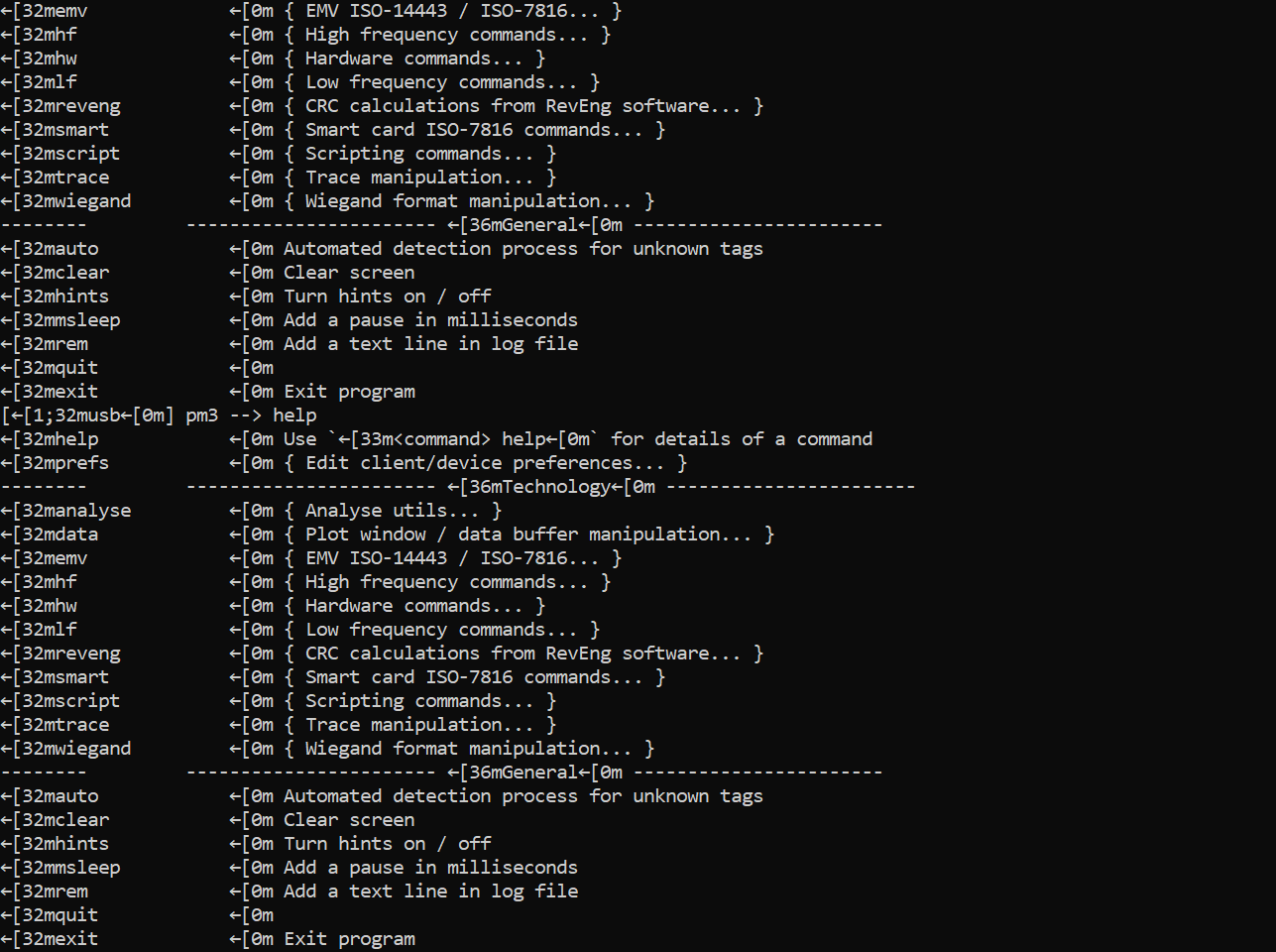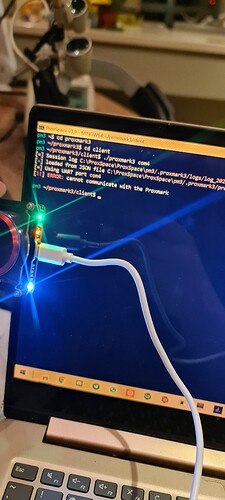Last night while making an access key for a relative coming back from the UK I was using the proxmark and some time during the operation I messed something up in the proxmark. In the hopes of not having to bang my head against its software for several hours I tried to do the first step in computer trouble shooting. Turning it off and on again by disconnecting the cable. I must’ve gone in off center or something because the next moment I heard (and felt) a very disconcerting click. Upon examination it seems like the USB port snapped off on the board itself. At that point I decided it would be better to sleep and then solve it the next day. So I went and woke up this morning and started fixing it. I firstly soldered the anchor points on it which all came out fine. Then the most dreaded part of it. Having to use a soldering iron (and I’m pretty amateurish at soldering as well) to solder the data pins to the PCB. I came so close to getting it right. But it’s just not enough. Any tips on how I could fix it. Was thinking either solder wick (but I’m not sure where I’d get that here short of ordering online) or perhaps reflowing the solder using my hotplate. What are your thoughts on this? How would you fix the shorted pins? (picture using 20× jewelers loupe as magnifier)
A quick brush with the soldering iron tip that’s small enough, and run in parallel with the pins (stroking the pins with the iron) should fix it. Ensure there is flux, and give it a quick wipe or two and the solder should bulb up on the pins. Just be sure the tip is free of all but the thinnest of tinning solder … don’t want to add more solder to the mess.
Ok as an update it appears to have been successful. But I’m getting very strange data and behaviour from the pm3 and I’m not sure it’s a software bug (from perhaps corrupting it beforehand) or if it’s from a shorted data pin. uploading pic of what it’s spitting out after typing help in terminal. I was also able to read an HID tag but it was wrong in the same weird way. I’ll post pics of how it looks now. Computer died before I managed screenshot
Ok wow this is weird. It works for a short amount of time but then it starts going crazy and keeps looping on standalone mode
you can see it working on top then it starts the standalone mode. and it went into that without prompt. Is it perhaps a software corruption and can be fixed by a fresh install?
Edit: original weirdness seems to be gone but here’s that for what it’s worth
standalone mode… sounds like a bit of metal or solder or something might have gotten over to the button… or maybe something it rattling around on the board causing intermittent shorts on data lines?
Well idk what was wrong it’s working perfect now. Gonna try write something.
There is also parity between chips (I.E. the codes it’s spitting out are correct)
I believe the reason for going into standby mode is because it lost power while in that mode originally, so perhaps it needed a new startup? I’m not too sure but appears to work. Will be back as soon as possible to see if it writes to T5577 and if the NFC still works on it
Edit 1: Ok while I was getting chips to program it started going into the looping standalone again, but this time I can’t seem to cancel it with the button, cancelling using the exit command stopped the flashing LED’s on it. But now it just has the orange and green LED on solidly
Edit 2:now it’s refusing to communicate with the proxmark as a whole and my PC no longer recognizes it as a device
Edit 3: rip

Oh yes I don’t think I addressed it in the post. I don’t think it’s an errant gob of solder since I ultrasounded it at pretty low power with distilled water so that should’ve gotten everything that could cause shorts like that off
Edit: this is now how it’s sitting.
But it’s still being picked up as com4 if I go into device manager
Disclaimer: I’m not an expert in this at all. Just throwing out suggestions.
The software is detecting something in COM4, but not a proxmark. I know you said it’s still being picked up as com4, but I would go to your device manager and double check that it’s not just showing up under a different port. My pm3 easy uses COM9 and shows as a standard usb input device for example. I don’t know what would cause it to switch, but it’s worth checking!
You could also try switching out the cable maybe? This is also unlikely, but worth a shot if it means you don’t have to re-solder anything.
To be honest though, it sounds like what Amal was saying: you likely have a short on your data line. What I assume happened is that you soldered it just barely well enough to get everything connected properly. Over time, the connection got looser and looser until it just wasn’t able to send/receive data at all. In the last image you sent, it looks like the pm3 is in standalone mode, so the rest of the hardware/software seem to be working as intended. I would recommend carefully examining the area around the plug to make sure that nothing got desoldered, that you didn’t get any solder where it wasn’t supposed to be, and that you didn’t accidentally bridge any connections.
Ever since I got my pm3 easy I’ve been terrified of doing the exact same thing as you lmao. Hopefully you can get it fixed! It’d be a pain to have to get a new one.
Not necessarily, a spot of hot solder could stick to the board and ultrasound shouldn’t remove it.
Equally, if one of your joints was marginal, ultrasounding might not have helped it either.
I would double (and probably triple) check the connection between the USB port and the board. Do you have any way of testing the continuity?
I’ll have a look at it again going over it with a fine tooth comb. But looking back at what happened and the failure mode (I.E. failing over the course of several minutes after working properly at first) leads me to think that if it is a short it’s not a constant short, so the ultrasound should’ve removed that. I’ll see what I can do though and what I can see. As for damaged SMC’s I don’t see any in the area I was working and I don’t think I got any. But I’ll also give them a good test. And I do have a continuity tester. I’ll have to get it out but it’s somewhere
From what I understand you are now at the point where it is not showing up on Windows?
Im curious if the button functions as it should. Try unplugging it. Hold the button down and plug in still holding down the button.
Anything shown in device manager (could be a different COM port or still an unrecognised device)?
Can you also post high (as high as you can) res photos of the board itself?



